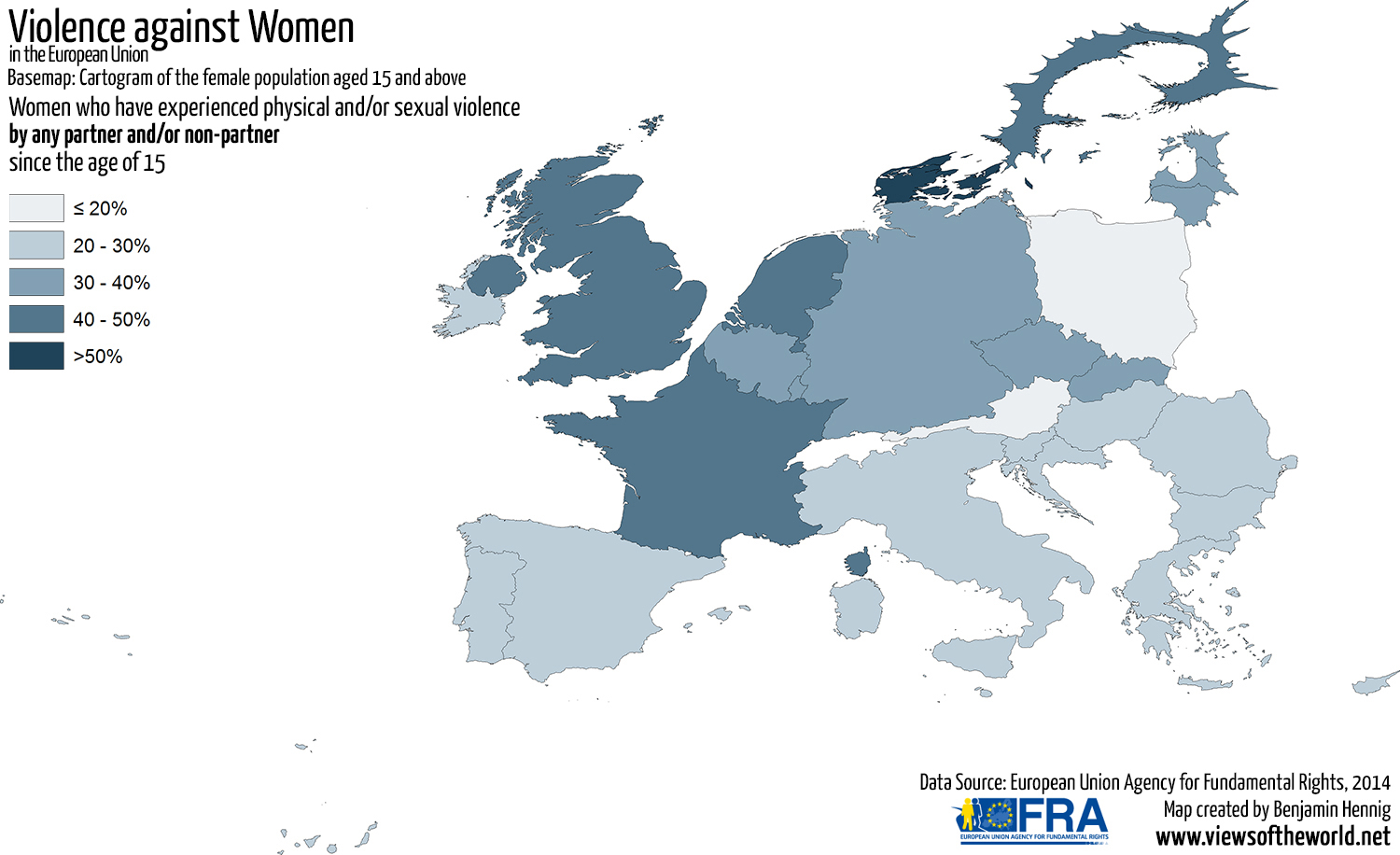Everyone has a responsibility to prevent and end violence against women and girls, starting by challenging the culture of discrimination that allows it to continue.
UN Secretary-General Ban Ki-moon
Today’s International Day for the Elimination of Violence against Women raises awareness for an issue which on the campaign’s website is described as a global pandemic because of the discrimination against women and persisting inequalities between men and women: “35% of women and girls globally experience some form of physical and or sexual violence in their lifetime with up to seven in ten women facing this abuse in some countries. It is estimated that up to 30 million girls under the age of 15 remain at risk from FGM/C, and more than 130 million girls and women have undergone the procedure worldwide. Worldwide, more than 700 million women alive today were married as children, 250 million of whom were married before the age of 15. Girls who marry before the age of 18 are less likely to complete their education and more likely to experience domestic violence and complications in childbirth.”
These problems are a global phenomenon. In a recent report by the European Union Agency for Fundamental Rights it was concluded that “an estimated 13 million women in the EU were victims of physical violence during the 12 months before the survey” and “an estimated 1.5 million women in the EU were raped in the course of those 12 months.”
The following maps show some of the key data of the study in form of cartograms that use the number of adult women as a basemap, meaning that each country of the European Union is resized according to the total number of woman aged 15 and above to which the overlaid statistics relate in the survey. The maps show the real extent of violence against women in the EU. The first map summarises the data, while the second map series below splits the results from the study into violence within and outside relationships:
As so often, geography matters a lot here and as this map series shows that there are variations on how spatial patterns of violence against women. As stated in the study (p30): “Considering the results at the country level, the rates of partner violence range from 30 %–32 % in Finland, Denmark and Latvia to 13 % in Austria, Croatia, Poland, Slovenia and Spain. The prevalence rates for non-partner violence present a similar degree of spread, from a high of 34 %–40 % in Sweden, the Netherlands and Denmark to 10 %–11 % in Portugal, Greece and Poland. The rates of partner and non-partner violence are positively correlated, meaning that countries with a higher prevalence of partner violence also, in most cases, display higher rates of non-partner violence” It continues (p31) that “This correlation may suggest that partner and non-partner violence do not take place in isolation and that this indicates the degree to which violence is prevalent both in public and in private life. It has also been suggested, however, that victimisation rates, as established through survey research, reflect the extent to which it is socially acceptable to talk openly about violence – and, by extension, to talk about it in a survey.”
Violence against women is a serious problem in the European Union. This study based on interviews with 42,000 women across the 28 Member States was a first step in tackling the persistent lack of comparable data – and also served as a reminder that the issues addressed here are far from being limited to other parts of the world.
The content on this page has been created by Benjamin Hennig using data by the European Union Agency for Fundamental Rights. Please contact me for further details on the terms of use.



Pingback: Map of the day: Violence and European women | eats shoots 'n leaves